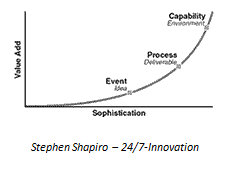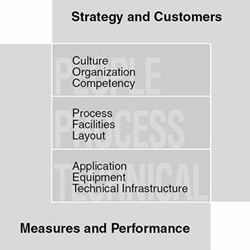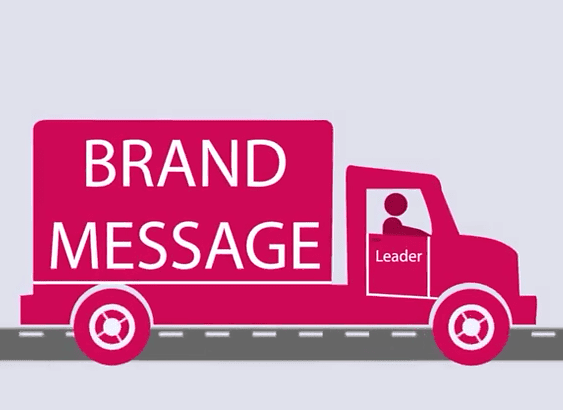 Telling Employees to Get Out of the Box Can Kill Creativity.
Telling Employees to Get Out of the Box Can Kill Creativity.
Too often, we see organizations that send employees to creativity classes. When these individuals return, they are excited about innovation and generating new ideas, but then are confronted with an environment that stifles business innovation. They become disgruntled and frustrated. Now you have an even bigger morale problem.
Creative ideas without a conducive environment lead to employee dissatisfaction.
These are the Three Levels of Business Innovation – Based on Stephen Shapiro’s articles and philosophy.
According to Stephen Shapiro, there are three major stages of innovation but the progress is not sequential:
• Innovation as an event (creative thinking)
• Innovation as a process (making innovation repeatable)
• Innovation as a capability (embedded innovation)
 The process of cultural design must be started before people are trained on creative thinking. The business innovation culture grows from there in both directions: down, towards Skills/Knowledge (Event); and up, towards developing and embedding Capability through practice, experience and learning to connect the dots, the process of synthesis.
The process of cultural design must be started before people are trained on creative thinking. The business innovation culture grows from there in both directions: down, towards Skills/Knowledge (Event); and up, towards developing and embedding Capability through practice, experience and learning to connect the dots, the process of synthesis.
Our ultimate objective is to help you create an environment where innovation is as natural as breathing:
The Innovation Capability.
 The ultimate test of innovation culture is: REPEATABILITY. For business innovation to be repeatable, it needs to be treated like any other business capability (e.g. finance, HR, or sales). All capabilities are comprised of five key components:
The ultimate test of innovation culture is: REPEATABILITY. For business innovation to be repeatable, it needs to be treated like any other business capability (e.g. finance, HR, or sales). All capabilities are comprised of five key components:
Strategy
A strategy is needed to decide when, where, and how innovation will be used within the organization. It also needs to address “why” business innovation is important. Are you looking primarily for a new pipeline of products? Do you want to better serve your customers? Are you looking to create a more nimble, flexible, and adaptable organization? For one company, the innovation mantra was “2 by 10” – to become a $2 billion business by 2010. This made it clear to all employees why business innovation was needed and what that innovation must deliver.
Measures and Performance
Business innovation, as with any capability, needs to be measurable and measured. You will want to measure the value of your innovation pipeline. But who will be measured? What kinds of measures are used? How will you measure less tangible values such as adaptability? How will you relate innovation to overall business outcomes and results?
Process (and infrastructure)
Business innovation requires an end-to-end process for targeting, generating, and selecting innovative ideas. Therefore, to help organizations make innovation repeatable and sustainable, we developed a simple, yet robust process. This process is the basis of our popular “Innovation Personality Poker.” This fun card-based game helps your team better understand how everyone contributes to – and detracts from – your innovation efforts. This leads to the next component…
People
Your people are your culture. If you want a culture of innovation, your employees must embrace actions, values, beliefs, skills, and language that are consistent with this objective. Everyone, at all levels, must embrace failure while giving up control. Your teams must have both creative individuals, as well as those to who implement the change.
Technology
Innovative companies use technology to enable collaboration between employees, customers, and suppliers. Decisions are supported by data. Ideas are captured in idea banks to facilitate the dissemination of innovative thinking. These technologies enable communication at all levels, across all organizations, and across business boundaries.
 InnoFuture helps businesses build innovative cultures through tailored and public learning programs that help inform, inspire and connect your people.
InnoFuture helps businesses build innovative cultures through tailored and public learning programs that help inform, inspire and connect your people.
Contact us |Twitter: @InnoFuture


